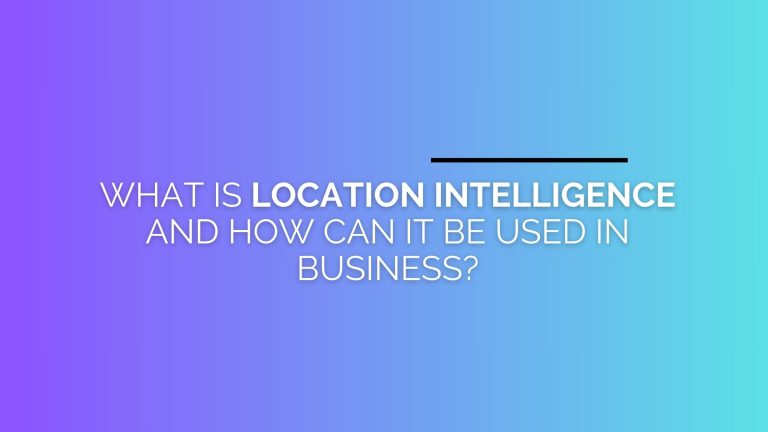
What is Location Intelligence?
Location Intelligence (LI) extracts insights from location data to answer spatial questions. LI extends beyond simple data visualization on maps to analyzing location data as an integral part of a business or societal issue.
How is Location Intelligence (LI) different from Business Intelligence (BI)?
Data Focus
BI focuses on temporal data and occasionally uses maps. LI focuses on location-first analyses.
Analysis
BI platforms visualize and display pre-processed results on a map. LI enables iterative analysis of multiple interactive data layers.
Typical User Actions
In business intelligence, users discuss zooming, filtering, and printing. In LI, we discuss analyzing, comparing, predicting, augmenting, and publishing interactive results.
How Businesses Can Use Location Intelligence to Improve Results
- Ad Targeting
Ad targeting is quite possibly the most widely recognized and handily executed utilization for location data. Organizations can use analytical reports from location intelligence to create advertisements with specific characteristics for their target audience. This gives the customers a satisfying ad experience where they receive messages for the products most relevant to them. Accordingly, companies can drive in customers most likely to purchase their products.
2. Omnichannel Imputation
Location intelligence enables businesses to connect online and offline activities. Online advertisements assist in regulating foot traffic in specific stores, malls, restaurants, and other venues. Businesses can create various campaigns to increase online engagement and attract customers to their stores. Many companies around the world also provide special discounts during store visits. As a result, they promote special offers on social media and target customers who are likely to visit that section of their store.
3. Getting Ahead of the Competition
Businesses use location analysis to gain an advantage over their competitors by understanding their marketing strategies and audience reach. Rather than focusing solely on their clients, many businesses use location intelligence to assess their market competitors. Organizations can compare their store visits to those of their competitors by visiting contender areas. They can also see where their competitor’s customers go before and after visiting the store. With this information, organizations can use geoconquesting tools to direct their competitors’ customers to their stores instead.
4. High click-through rate and ROI
Businesses can use analytics and CRM to develop detailed sales and customer service personas. This will allow the companies to learn more about their target audience and their interests. This can also help to improve business results by utilizing these detailed personas to further develop correspondences throughout the client’s life cycle, resulting in a better client experience. Businesses with effective CTR and ROI can provide relevant discounts and offers to achieve better results. Organizations achieve a significant increase in CTR for promotional efforts simply by utilizing area insight to contact large audiences and provide more personalized offers.
5. Brand Image Development
Location intelligence reports enable brands to improve their market image and connect emotionally with their customers. Customers trust the brand more when it provides a personalized ad experience to its target audience. This allows existing customers to stick with the brand for a long time. Almost any industry can use location intelligence to improve their services, increase revenue, and better understand their customers/visitors and how they interact in a physical space.
Which types of data are used in Location Intelligence?
Location data can include addresses, latitude/longitude coordinates, points, lines, and polygons. You can also generate spatial data from place names and administrative units like countries and states.
However, in addition to using internal data from their organizations (such as CRM, loyalty cards, and e-commerce), organizations regularly collect publicly available Open Data to supplement their analysis.
More and more premium spatial data streams are being used, including financial, human mobility, road traffic, points of interest, weather, climate, and housing.
Do you want to start using Location Intelligence in your company?
LocationsCloud is a well-known company that provides Points of Interest (POI) data. Discover how LocationsCloud can assist in using Location Intelligence.




